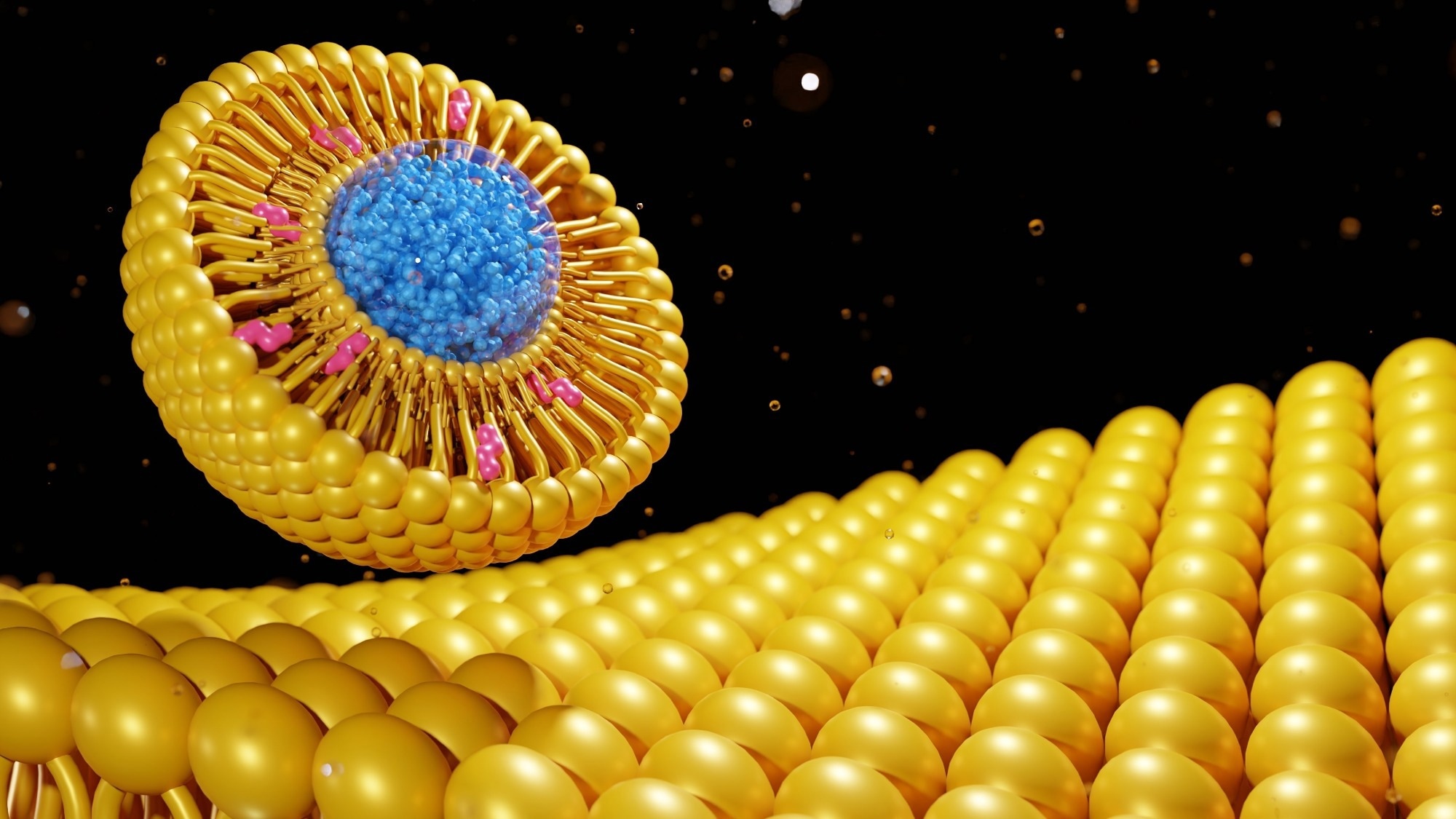A recent study published in Small explored how cationic fusogenic liposomes can merge directly with cellular membranes to improve drug delivery. Researchers found that these liposomes can temporarily modify membrane properties without causing long-term changes to cell function, making them a promising tool for therapeutic applications.
 Image Credit: Love Employee/Shutterstock.com
Image Credit: Love Employee/Shutterstock.com
Background
Many drug targets are located inside cells, requiring drug carrier nanoparticles that can efficiently cross the plasma membrane. Traditional methods rely on internalization pathways like endocytosis, which can be slow and result in incomplete cargo release. Fusogenic liposomes, however, take a different approach. Their positively charged surfaces allow them to fuse directly with membranes, rapidly delivering their contents into the cytosol or other intracellular compartments.
While this fusion-based approach has advantages, it also raises questions about how it affects membrane structure and behavior. Potential changes include shifts in membrane packing, fluidity, curvature, and surface tension, as well as the formation of temporary pores. Understanding these effects is essential for ensuring that liposome-based drug delivery remains safe and effective without compromising cellular integrity.
The Current Study
Researchers tested different formulations of cationic fusogenic liposomes to determine how their charge density and lipid composition influenced fusion efficiency and membrane effects.
They varied charge density by adjusting the ratio of mono- and multivalent cationic lipids. To assess the impact on fusion performance, they also incorporated helper lipids with different molecular shapes, either cylindrical or cone-shaped.
To measure fusion efficiency and membrane changes, the team used multicolor confocal microscopy and fluorescence lifetime imaging microscopy (FLIM). Giant unilamellar vesicles (GUVs), which lack metabolic activity, served as a controlled model for studying the purely physical and chemical effects of liposome interactions.
They also examined living cells to understand how the observed changes translated into biological contexts.
Results and Discussion
The study found that cationic fusogenic liposomes efficiently fused with both synthetic membranes and living cells, delivering cargo almost instantly.
Fusion efficiency was closely tied to charge density—higher charge levels increased membrane binding and, in some cases, eliminated the need for helper lipids. Liposomes with lower charge densities, on the other hand, were less effective at docking and fusing with membranes, underscoring the role of electrostatic interactions in this process.
Once fusion occurred, it caused temporary changes in membrane properties. In GUV models, the addition of new lipids altered membrane packing and fluidity, leading to fluctuations in membrane tension and slight increases in volume.
The study also observed the formation of short-lived hydrophilic pores, which allowed cargo to enter the cytosol without permanently compromising membrane integrity.
Interestingly, proteins from serum that coated the liposome surfaces reduced their fusion efficiency by masking their charges. This effect mirrored the behavior seen in liposomes with naturally lower charge densities.
While protein corona formation can sometimes lower toxicity, it may also interfere with liposome functionality, highlighting the importance of understanding how external protein interactions impact drug delivery systems.
Despite these temporary membrane modifications, cells could recover once the liposomes were removed. This reversibility suggests that fusogenic liposomes can be used for drug delivery without causing long-term damage to cellular membranes.
By quantitatively assessing these interactions, the study provides a clearer picture of how fusion-based delivery systems operate while maintaining cellular stability.
What’s Next for Fusion-Based Drug Delivery?
These findings open the door for further refinements in liposome formulations to improve drug delivery efficiency while minimizing potential side effects. Future research could explore ways to optimize charge density, lipid composition, and fusion conditions to enhance therapeutic outcomes.
Understanding how external factors like protein interactions influence fusion efficiency will also be crucial in designing next-generation liposome-based treatments that are both effective and safe for long-term use.
Journal Reference
Hammond J., Richards C. J., et al. (2025). Membrane fusion-based drug delivery liposomes transiently modify the material properties of synthetic and biological membranes. Small 2408039. DOI: 10.1002/smll.202408039, https://onlinelibrary.wiley.com/doi/10.1002/smll.202408039